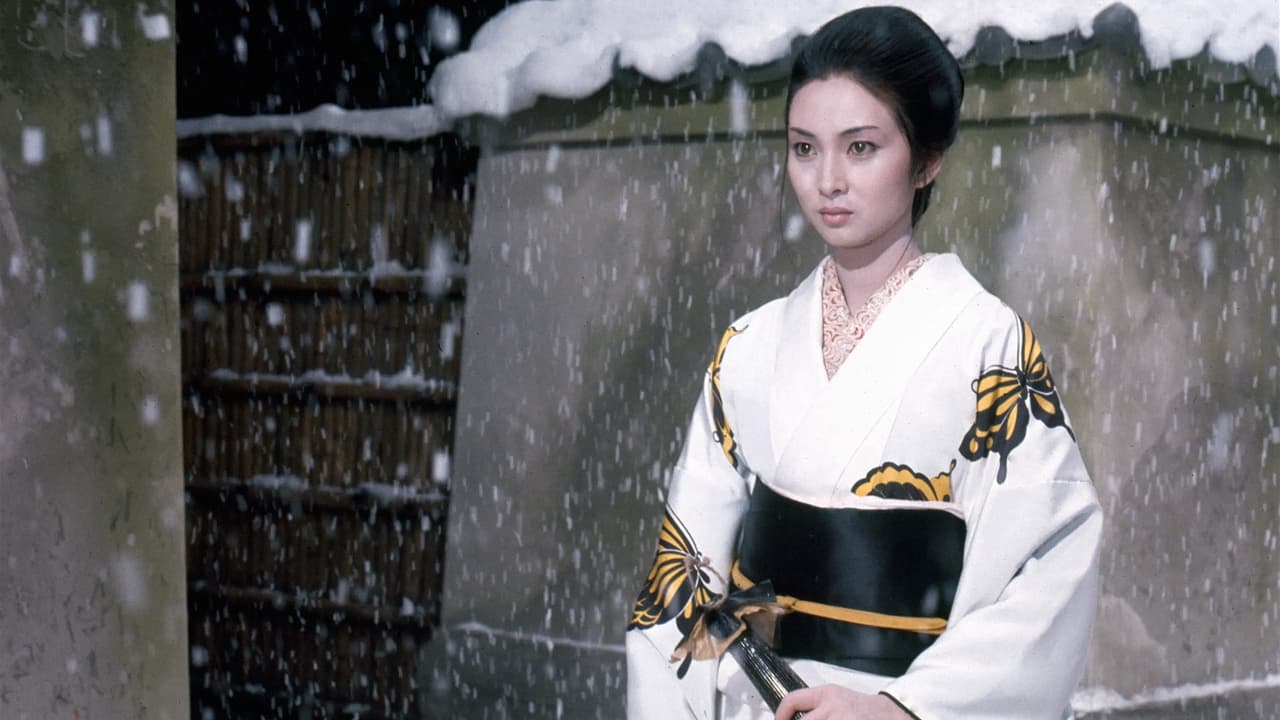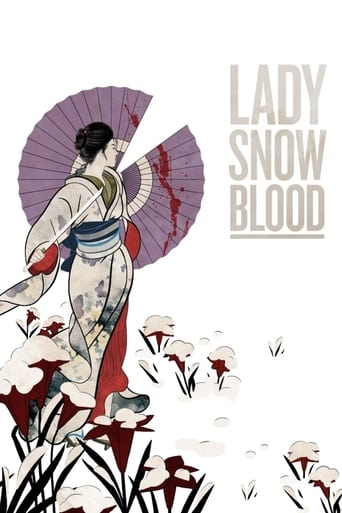

This movie begins in 1874 with a woman named "Sayo" (Miyoki Akaza) giving birth to a baby in a Japanese prison. As it so happens, Sayo's husband and her young son were killed by four bandits and she was subsequently taken away by one of them and forced to become his consort. Eventually, Sayo kills her abductor which results in her being imprisoned for life. Although Suyo dies after giving birth her last words to her fellow inmates is to make sure that her baby "Yuki" (Meiko Kaji) gets revenge on the other three people responsible for the atrocities committed upon her family. To honor her request Yuki is then given to a nearby priest who not only raises her but also teaches her the necessary combat skills she will need to exact her revenge. And then at the age of 20 she is released to fulfill her mission in life. Now rather than reveal any more I will just say that this was an entertaining movie with a good plot and some fascinating elements of Japanese history and culture. Unfortunately, it also had several action scenes which were much too unrealistic and this greatly limited the overall effect. Even so, in spite of its faults, I still liked this film and I have rated it accordingly. Slightly above average.
... View MoreEven without knowing it or reading other reviews of the picture on this board, I had an instinctive feeling that this film would have been an inspiration for Tarantino's "Kill Bill" films. Many of the elements in this picture surface again in his movies, and others have done a fine job of detailing those specifics, so I won't have to go into them here.What I liked about this story had to do with not following the typical revenge route that most Ninja assassin flicks take. Yuki Kashima (Meiko Kaji) wasn't trained in the physical martial arts per se, her brutal disciplinarian Dokai (Ko Nishimura) instructed her in skilled swordsmanship. There was also the uniquely creative idea of using a newspaper writer to tell the 'fictional' story of Lady Snowblood in such a way as to parallel Yuki's life experience to draw out her victims from hiding.What detracts from these tales somewhat, at least for me, is the brilliant clarity of all that bright red blood spurting around whenever a swordsman/swordswoman contacts a vital organ. Granted, it's done for effect, but it just doesn't come across realistically. Nor does the ease with which one can cut a victim's body in half as if slicing through a brick of butter. Could it be that easy? I hardly think so.One element introduced in the story sounded intriguing enough that I had to look it up. That had to do with what the picture described as the 'Blood Tax Riots of 1873'. It turns out that this wasn't so much a revolt against a pecuniary tax (although two hundred seventy yen in the story would relieve one's duty), but one against the Meiji government's attempt at a conscription service. There were other policies of the government that met with hostility as well, such as land and education reform that did not meet with the approval of those whose lives were being affected.With that backdrop, introducing the Blood Tax Riots into the story was generally a moot point, since Yuki was a woman who would not have been affected by conscription. Thinking about that, I had to wonder why the idea was introduced in the first place, other than it sounding cool.Anyway, the story does manage to take some interesting twists and turns relative to the identities of the three victims Yuki must seek out and their relationships to other characters in the story. Not entirely unpredictable in hindsight, but they are surprising when revealed through the course of the picture. One on one comparisons with Tarantino's epic flicks however is probably a moot exercise, coming as they did thirty years later with the benefit of advanced technology and CGI camera tricks. Yet it's still a fine revenge picture for Japanese cinema fans and not for the faint hearted.
... View More*** This review may contain spoilers *** *Plot and ending analyzed* I guess if you have the brain of a gerbil and chew sugar candy all day, this film should fit your bill just fine. Others might want a little more in the way of a coherent story. There are parts of Lady Snowblood that are atmospheric and colorful, but the idea is not handled with enough competency, or even concern.Lady Snowblood is some dull, waif of a woman, who has a feeble umbrella sword, whom she uses to chop in half corpulent bodies, hands, limbs and heads. Okay. The enemies are as imbecilic as the premise, even unable to fight such a woman. They just sit by and wait to be "chopped up". I must admit that the high reviews made me think these films would rate as high as Zatoichi: The Blind Swordsman or Lone Wolf and Cub, but they are nowhere near as great.Still, they are worth a look for the time.
... View MoreLADY SNOWBLOOD is widely known as one of the main inspirations behind Tarantino's KILL BILL, featuring the same plot (a woman tracks down the members of a gang, one by one, for the purpose of revenge) and stylistic flourishes (not least the separation into chapters). It's another manga adaptation along the same lines as the LONE WOLF & CUB saga, and while it may not be quite as exhilarating as those films, it comes close at times.The story is mannered and carefully paced, so those looking for an action-packed thrill-ride along the lines of modern cinema might be disappointed. It's fairly slow but never less than beautiful, with precise attention paid to costumes and scenery, which makes for a wonderfully cinematic experience. As expected, there are also the requisite fight scenes containing the usual blood-spurting mayhem that Japanese samurai cinema is known for.Okay, so the story is slight, but many scenes resonate with real power, and my favourite bit sees Snowblood cornering one victim on the beach while he pleads for his life. Meiko Kaji's turn as the resourceful, determined heroine is powerful indeed, and it's just a shame that some sub-plots, such as the inclusion of an investigative journalist who teams up with the protagonist, don't really add up to much. In addition, the action scenes, while good, lack the kind of visceral power and innovative style that made LONE WOLF & CUB so great. My overall conclusion is that LADY SNOWBLOOD is entertaining enough in itself but no classic.
... View More